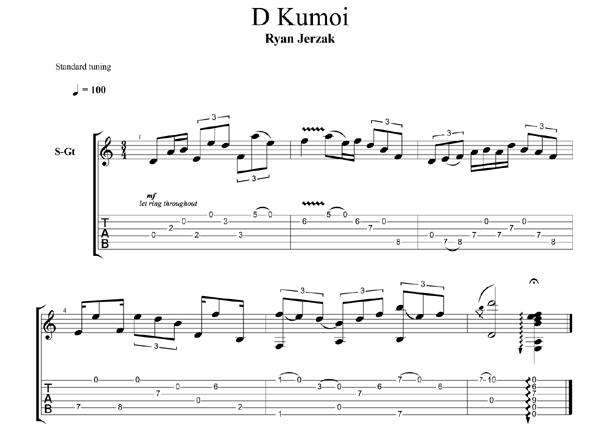When you hear the word pentatonic, the first thing that may come to mind is the all too familiar pentatonic scale overused by just about everyone under the sun. While there is absolutely nothing wrong with it, there awaits dozens of other pentatonic scales begging for your attention. First we’ll look at how to apply scale formulas to yield new scales, then we’ll take a quick peek at some applications.
Let’s kick things off with a Japanese pentatonic scale known as Kumoi. The formula for generating a Kumoi scale is (1, 2, ♭3, 5, 6, 8). This basically means that these are the notes that we’ll take or modify from any given major scale. If we want to figure out which notes would make up a D Kumoi scale, we would apply the formula mentioned above to the D major scale. The notes in D major are: D, E, F♯, G, A, B, C♯, D. Therefore the resulting notes in D Kumoi are: D, E, F, A, B, D.
This scale works well over chords such as D minor6/9, B half-diminished, F major 7♭5, to name a couple. You can combine the notes of D Kumoi any way you see fit to generate chords to create some interesting progressions. Of course D Kumoi would be the scale of choice for improvising or writing melodic lines over your new progression.
A few other cool pentatonic formulas are: Kokin-Chosi (1, ♭2, 4, 5, ♭7, 8), Yo (1, 2, ♭3, 4, 5, ♭7, 8), and Iwato (1, ♭2, 4, ♭5, ♭7, 8).
The included musical example is something I’ve written using D Kumoi. Have fun!
Interested in guitar lessons? Call Ryan at (615) 796-1896.













